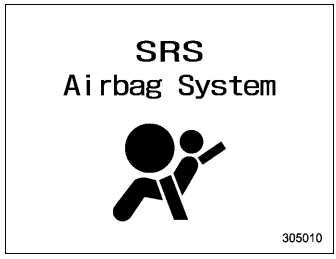Subaru Forester 2019-2025 Owners Manual / Consumer information and reporting safety defects / Tire information / Tire care – maintenance and safety practices
Subaru Forester: Tire information / Tire care – maintenance and safety practices
- Check on a daily basis that the tires are free from serious damage, nails, and stones. At the same time, check the tires for abnormal wear.
- Inspect the tire tread regularly and replace the tires before their tread wear indicators become visible. When a tire’s tread wear indicator becomes visible, the tire is worn beyond the acceptable limit and must be replaced immediately. With a tire in this condition, driving at even low speeds in wet weather can cause the vehicle to hydroplane. Possible resulting loss of vehicle control can lead to an accident.
- To maximize the life of each tire and ensure that the tires wear uniformly, it is best to rotate the tires every 6,000 miles (10,000 km). For information about the tire rotation order, refer to “Tire rotation”. Replace any damaged or unevenly worn tires at the time of rotation. After tire rotation, adjust the tire pressures and make sure the wheel nuts are correctly tightened. For information about the tightening torque and tightening sequence for the wheel nuts, refer to “Flat tires”.
 Determining compatibility of tire and vehicle load capacities
Determining compatibility of tire and vehicle load capacities
The sum of four tires’ maximum
load ratings must exceed the maximum
loaded vehicle weight
(“GVWR”). In addition, sum of the
maximum load ratings of two front
tires and of two rear tires must
exceed each axle’s maximum
loaded capacity (“GAWR”)...
Other information:
Subaru Forester 2019-2025 Owners Manual: Auto Start Stop OFF switch
Auto Start Stop OFF switch Auto Start Stop OFF indicator light (yellow) (type A) Auto Start Stop OFF indicator light (yellow) (type B) If the Auto Start Stop OFF switch is pressed, operation of the Auto Start Stop system will be disabled. The Auto Start Stop OFF indicator light on the combination meter will then illuminate in yellow...
Subaru Forester 2019-2025 Owners Manual: How to temporarily lower the sensitivity of the high beam assist function
The sensitivity of the high beam assist function can be lowered by performing the following operations. Before turning the ignition switch to the “ON” position, set the light control switch to the “AUTO” position and push the signal lever forward (high beam position)...
Categories
- Manuals Home
- Subaru Forester Owners Manual
- Subaru Forester Service Manual
- If the passenger’s frontal airbag OFF indicator illuminates and the ON indicator turns off even when the front passenger’s seat is occupied by an adult
- Unlock using PIN Code Access
- Automatic door locking/unlocking
- New on site
- Most important about car
Warning screen

Example of warning
If there is a warning message or a maintenance notification, it will appear on this screen. Take the appropriate actions based on the messages indicated.
Copyright © 2025 www.suforester5.com

